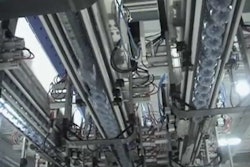Imitation may indeed be the sincerest form of flattery, but too many packaging innovators these days aren't just being imitated. They're being ripped off too quickly. Copycats aim to neutralize any marketplace advantage promised by innovative packaging.
The challenge today is more severe than it used to be since packaging is being used to differentiate the brand more than ever. In more instances today, the package has become integral in the functionality of the product. The packaging often plays an important role in delivering on a brand's promise and becomes a central element of the overall consumer experience. The package is often times what differentiates brands and some would even say, “The package is the product.”
Look at recent innovations in hearing aid battery packages. A number of different packaging solutions make it easier for the consumer to get the batteries from the package into the hearing aid. The innovations consider the reduced dexterity and coordination of some users of hearing aids and provide an answer with packaging. The packaging solutions become an integral role in adding value to what can become a commodity product.
With hearing aid batteries—and with a number of other product categories—the line between the package and the product has become blurred. The delivery system becomes paramount when all of the products in a category deliver adequate quality to the consumers.
We have recently seen a number of attempts to mimic packaging innovations to neutralize a competitive advantage. Many organizations are now deciding not to sit on the sidelines and let that happen. Procter & Gamble recently filed a lawsuit against a private label manufacturer for copying, among other things, the “faceted diamond” shape of its Crest Pro-Health Rinse bottle.
Design versus utility patents
One approach in the quest to protect your investment is to aim at developing patentable solutions. Achieving this position can be a key to protecting your brand and achieving a competitive advantage in the marketplace. These patented solutions should go well beyond the aesthetics of the package (design patent) and deliver added functionality (utility patent).
Packagers have long relied on design patents to keep their edge in the marketplace. But, the number of utility patents issued is far less when it comes to improving the functionality and overall satisfaction level of a consumer packaged good. If you can demonstrate uniqueness and improvement of the package or component, you may have a patentable position.
WD-40 is a brand that faces “knock offs” around the world. They have met this global challenge in the past with contoured shapes and other design tactics. The new WD-40 “smart straw” appears to “raise the ante” while also establishing a potentially patentable position that is a barrier to anyone who might wish to copy the technology. It gives the brand owner another tool against counterfeiters who command an estimated 25% market share in China alone!
Getting to a patentable position
Getting to the patentable position requires following a solid packaging development strategy. Our experience is that the development process has to be built around the three essential components of Practical Innovation.
• Voice of the consumer. packaging development process has to explore conditions at the point of use. The term is “ethnography,” which in simplest terms seeks to answer the question, “How does the consumer really use or intend to use the product and package?” Then, apply that knowledge to be innovative enough to secure utility patents to protect these inventions while adding value to the brand.
• Business rationale. Is the value of the brand and the anticipated market share increase significant enough to warrant the investment? Does the innovation necessarily have to increase the cost, or can unique technology be employed to minimize or even offset any potential increase?
• Development expertise. Will the finished product fully deliver on the promise? Today, you cannot say, “We're 85 or 90 percent there. It will be okay.” Promised utility has to deliver all the time, every time.
We as packaging developers have to ensure these principles become part of our packaging discipline. We should consider integrating functional, patent protected designs into our packaging to build additional value into our product offering. And, we can do that in a way that gives the brand a competitive edge that can't be easily copied by those who look for a quick way neutralize the advantage we build into packaging.
About the author: IoPP member David Schultz is president and co-founder of Union Street Brand Packaging, a product development organization that focuses on making ordinary packaging extraordinary™.
For information about IoPP,
visit www.iopp.org


























